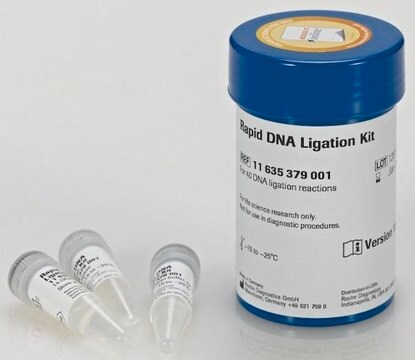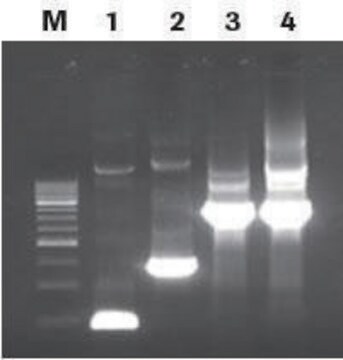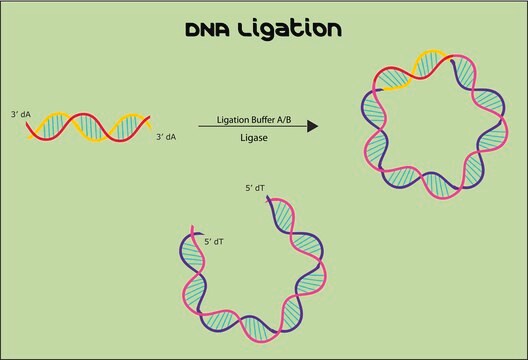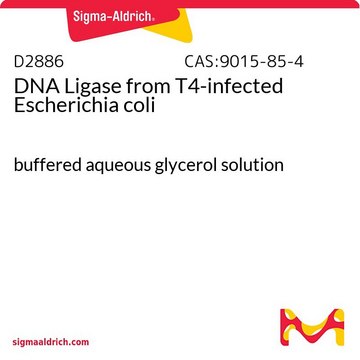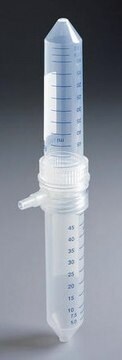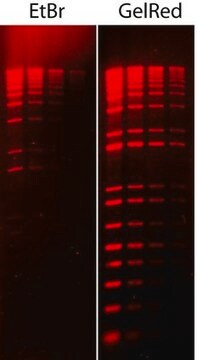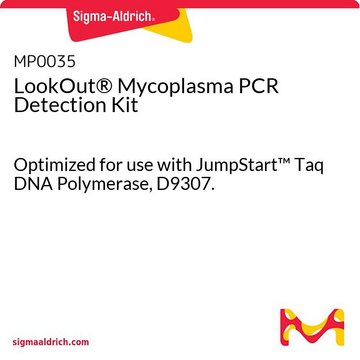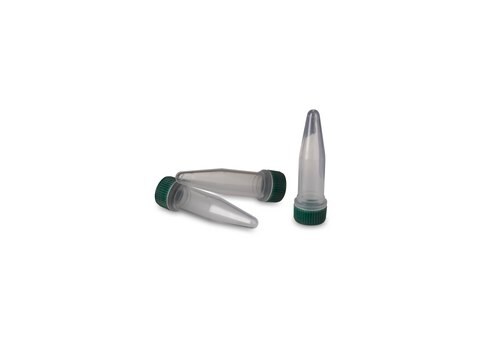LIG1
DNA Ligation Kit
About This Item
Produits recommandés
Qualité
for molecular biology
Utilisation
kit sufficient for 150 ligation reactions
Conditions d'expédition
wet ice
Température de stockage
−20°C
Description générale
Application
- Joining fragments of DNA into a cloning vector
- Mutagenesis
- Gene anyalysis and structure-function relationships
Composants
- 300uL 10X Ligation Buffer (D2176) in 250 mM Tris-HCl (pH 7.8) 100 mM MgCl2, and 10 mM dithiothreitol
- 3 x 100 units T4 DNA Ligase (D2886) in 50% glycerol with 10 mM Tris-HCl (pH 7.5) 50 mM KCl, and 1 mM dithiothreitol
- 3 x 100 uL 10 mM ATP ( A3702)
- 50 uL Control pBR322 DNA, HAE III Digest (D9430) 0.5 ug/ul in 10 mM Tris-HCl (pH 8.0), and 1 mM EDTA
- 1.5 mL 24% (w/v) PEG Solution, (P 2454)
- 1.5 mL Molecular Biology Grade Water (W4502)
Principe
Mention d'avertissement
Warning
Mentions de danger
Conseils de prudence
Classification des risques
Eye Irrit. 2
Code de la classe de stockage
10 - Combustible liquids
Classe de danger pour l'eau (WGK)
WGK 3
Point d'éclair (°F)
Not applicable
Point d'éclair (°C)
Not applicable
Certificats d'analyse (COA)
Recherchez un Certificats d'analyse (COA) en saisissant le numéro de lot du produit. Les numéros de lot figurent sur l'étiquette du produit après les mots "Lot" ou "Batch".
Déjà en possession de ce produit ?
Retrouvez la documentation relative aux produits que vous avez récemment achetés dans la Bibliothèque de documents.
Protocoles
The cloning process requires the ligation of linear DNA into a cloning vector. This ability to join fragments of DNA through recombinant technology is essential for many basic experiments in biotechnology.
Notre équipe de scientifiques dispose d'une expérience dans tous les secteurs de la recherche, notamment en sciences de la vie, science des matériaux, synthèse chimique, chromatographie, analyse et dans de nombreux autres domaines..
Contacter notre Service technique